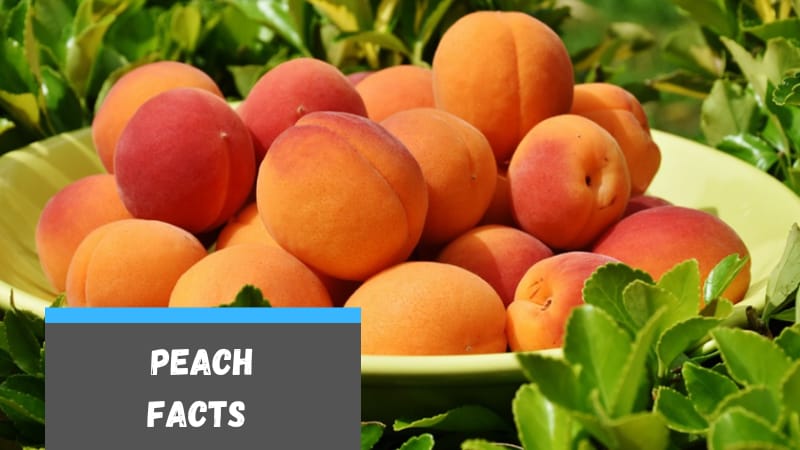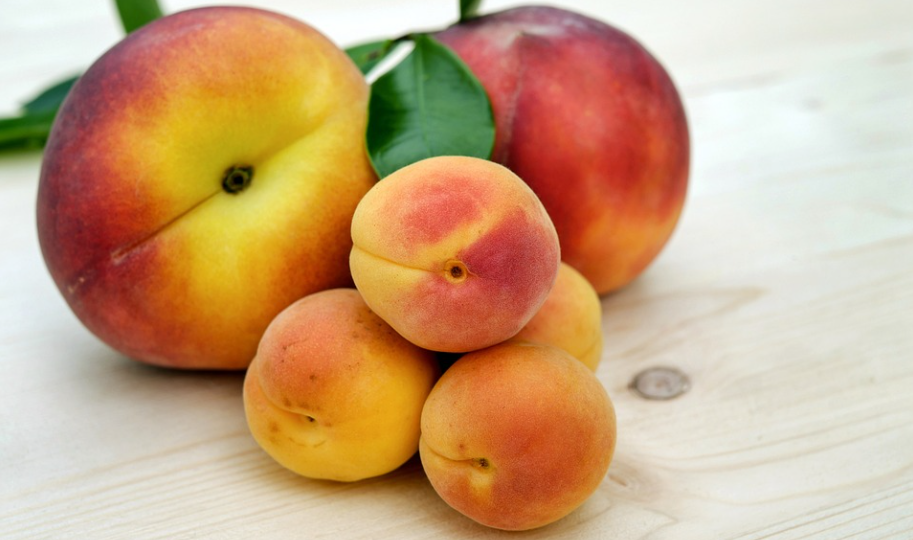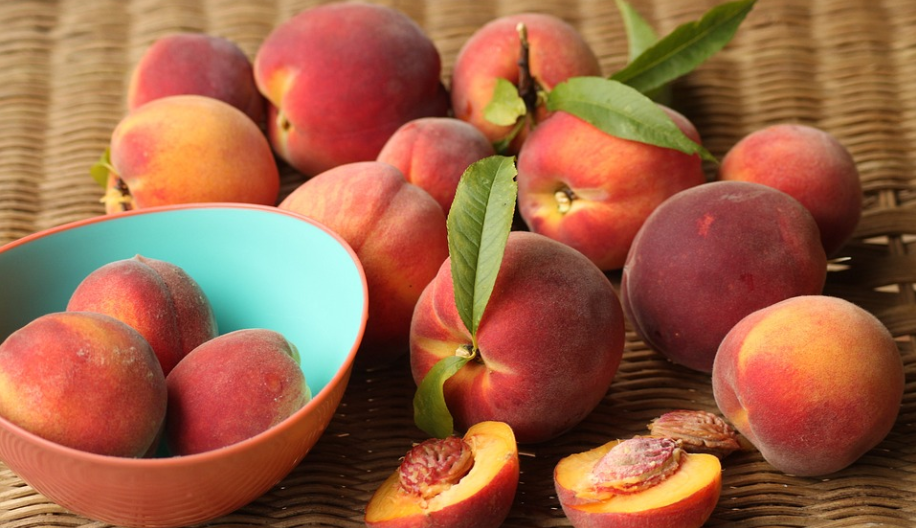
How many kinds of peaches are available today? When did people introduce peaches? Are peaches high in calories? Find these answers and more in these facts about peaches.
If you came here in the hopes of gaining some intriguing and insightful information regarding peaches, then you have come to the correct place.
Do not get deceived by the peach’s diminutive size and tender skin. Peaches may pack a powerful punch. There is around 11% of the daily vitamin C requirement in only one medium-sized peach.
This nutrient aids in the healing of wounds and helps keep your immune system functioning at a high level.
Peaches are one of the most popular fruits in the world, and if you are seeking some fascinating information about peaches, you are in for a lot of surprises.
The peach most likely started in China and then made its way westward through Asia and eventually made its way to the countries of the Mediterranean and then to the rest of Europe.
Peach trees are native to the region of Northwest China that lies between the Tarim Basin and the northern slopes of the Kunlun Mountains. Peach trees are deciduous trees.
Peaches are frequently consumed fresh, as well as it gets cooked into pies and cobblers; also, tinned peaches are a basic commodity in many areas of the country.
Let’s take a detailed look at the interesting facts about peaches.
Facts about Peaches
1. This region was the first place on Earth where peaches got planted and domesticated for human consumption. There are around 2,000 different kinds of peaches available today.
2. The peach, or Prunus persica, known by its scientific name. Because peaches were so widely cultivated in Persia, the scientific name for the species is “persica” (present-day Iran).
3. It’s classified under the Prunus genus. The cherry, the almond, the apricot, the plum, and other related fruits all come from the same genus. You can find all of these characteristics within the rose family.
4. Peach trees can reach heights of up to 7 meters, although with good maintenance and pruning, they typically only reach heights of 3 to 4 meters. It will live for a period of 12 years.
5. Flowers get produced in the early spring before the forming of leaves on the plant.
6. The diameter of the flower ranges between 2.5 and 3 centimeters, and they can be solitary or found in pairs. The petals of each flower are pink in hue, and there is a total of five of them.
7. The peach fruit can have flesh that is either yellow or white, and the peach’s skin can be either smooth (like nectarines) or velvety (peaches). Peaches are most commonly available throughout the summer months of June, July, and August.
8. The flesh is usually delicate, but it can be somewhat solid in commercial types, particularly when it is still unripe or green.
9. With a clingstone peach, you’ll have to work harder to get at the peach meat before you reach the pit.
10. Peaches are low in calories (less than 70 per large one) and high in fiber (3 grams per large one).

11. Every year, the state of Georgia is responsible for producing the “World’s Largest Peach Cobbler.”
12. Since 1982, the month of August in the United States is “National Peach Month.” The best time to eat peaches is between the months of June and August.
13. The name “Prunus Persica” refers to the peach tree in the scientific community. Prunuspersica is the name for the peach tree in the scientific community.
14. Peaches gets considered to have originated in the Northwest region of China, yet, in modern times, they have spread throughout most of the world.
15. Traditionally, fruit stones were quite large, but modern Japanese fruit has smaller stones. Even though the first domesticated this peach type was in China, it was already in existence in China between the years 3300 and 2300 BCE when brought it to Japan.
16. The Harappan period in India saw the introduction of peaches around 1700 BCE.
17. Clingstones and freestones are two other forms that you can find for them. In comparison to normal peaches, nectarines have a more intensely sweet flavor.
18. Peach and nectarine are the parents of the fruit we know as peachiness, which is a hybrid variation of the two. Both New Zealand and Australia are responsible for their production.
19. Around the year 300 BCE, Greece began growing peaches commercially. Peaches consider having to be in Europe by Alexander the Great when he invaded Persia. This is the consensus among most historians.
20. There are about 2000 kinds of peaches that you can find worldwide. A peach tree will live for about 12 years on average once someone plants it.

21. The ancient Romans referred to peaches as “malum persicum,” which translates to “Persian apple”.
22. The phrase “Persian apple” which borrowed from the French as “pêche,” from which the modern English word “peach” comes.
23. People usually know peaches by their scientific name, Prunus persica. The name comes from the Persian word for plum. We utilize the peaches near relative, the plum, in this context because plums have a relation to peaches.
24. The peach was first cultivated in China. Peaches were in China’s Zhejiang province around 6000 BCE, during the Neolithic era.
25. The Kuahuqiao location is where they uncovered the peach stones during the excavation.
Conclusion
Despite their naturally sweet flavor, Peaches contain fluoride, which can benefit dental health.
This mineral is in many different foods, including peaches, and you can also find it in toothpaste.
In doing so, it aids in the removal of cavity-causing bacteria from the mouth.
The peach is at its peak of ripeness when it smells the sweetest. In the end, they are a part of the rose family.
When they yield to the light pressure of your finger, this indicates that they are ready to consume.
If you want to let firm peaches ripen on your kitchen counter, you can do so, but remember to store them in the refrigerator after they reach the desired level of ripeness.
The amount of vitamin C they contain will decrease if they are in the open after reaching maturity. So, they are good for your health, and the taste is lovely.
It would help if you got your peaches after reading these facts. Stay connected for more related articles!
